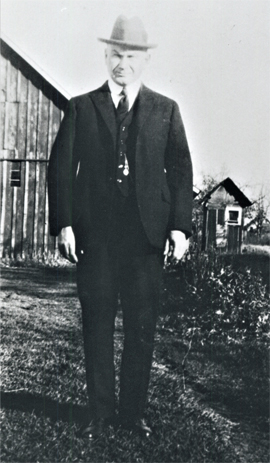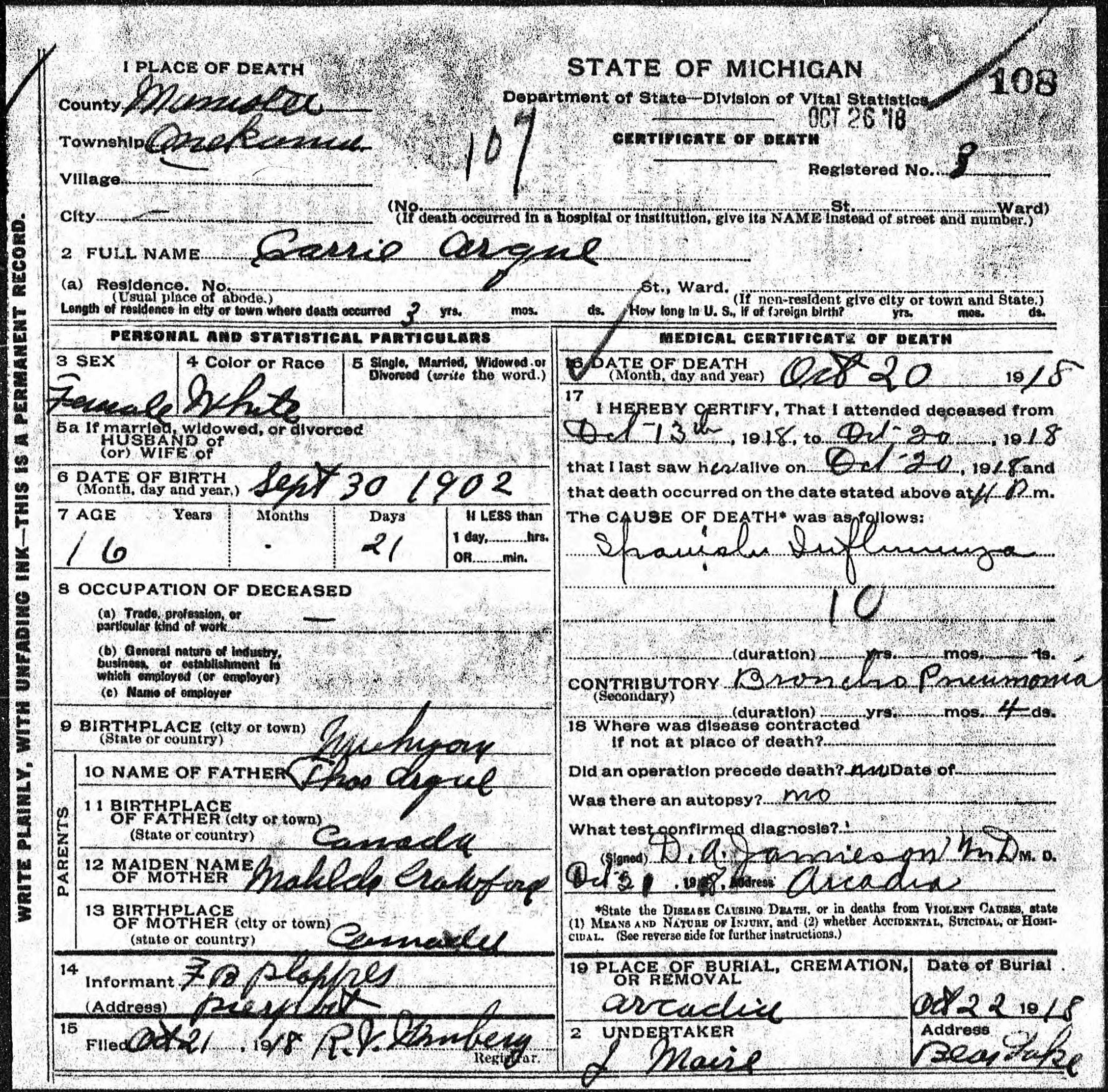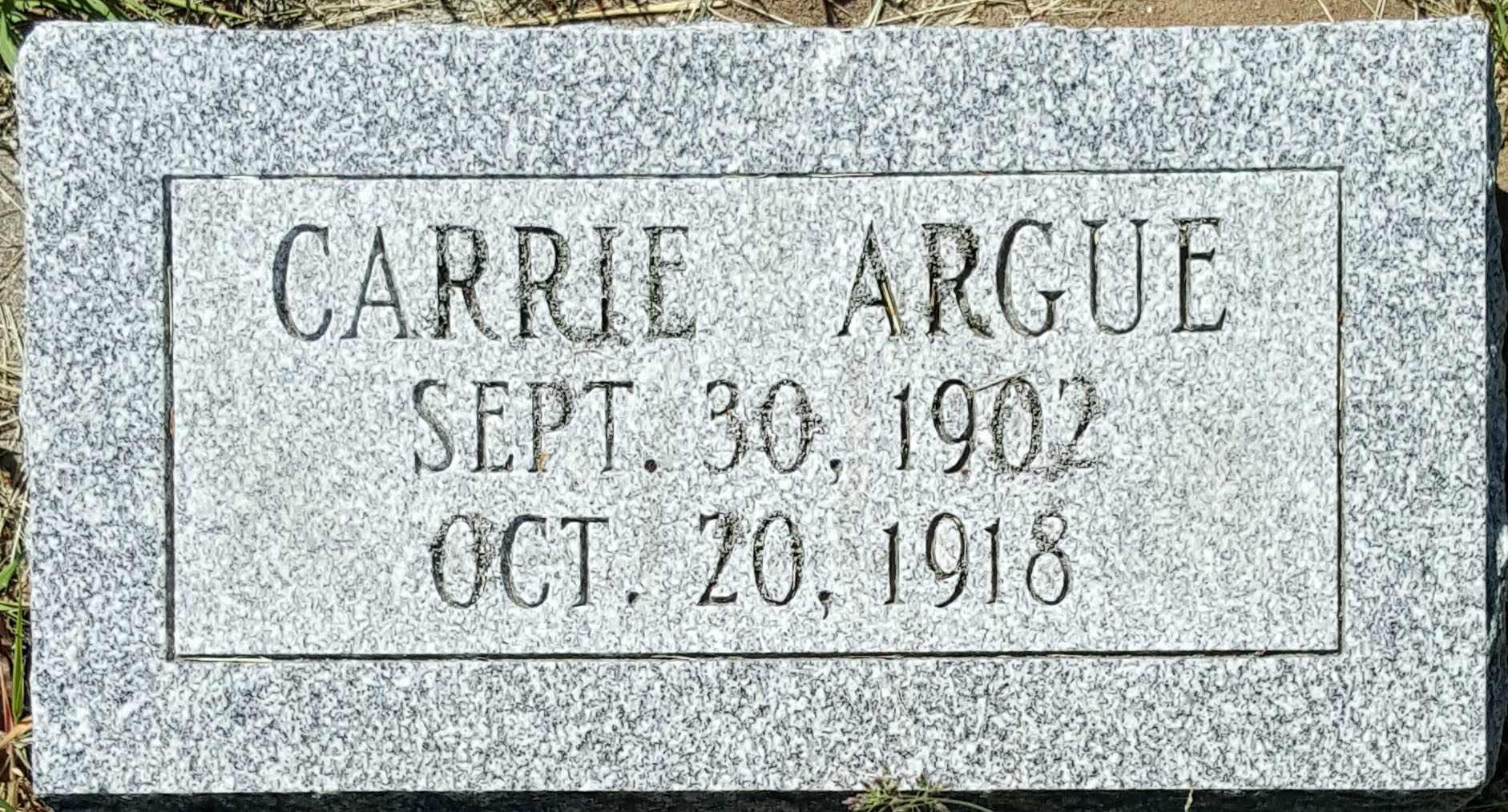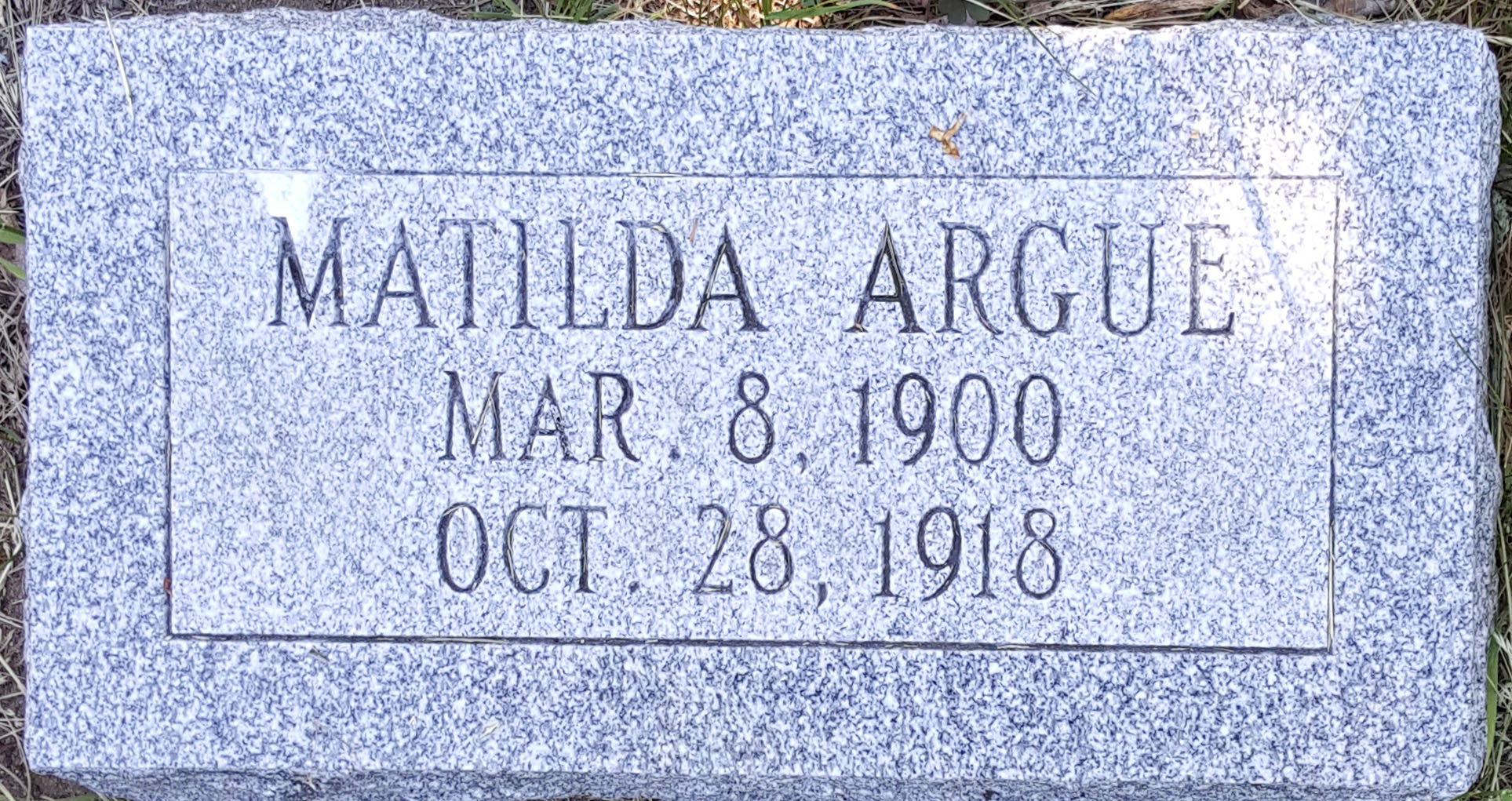|
In August of 2010, local historian Bonnie Hughes conducted a cemetery tour at Conway Cemetery just south of Arcadia, Michigan. As she approached headstones for the Argue family her mood grew somber, and she said "This is a very tragic story. ... Arcadia was being ravaged by the Spanish Flu in 1918. Maybe you all heard about it. These people were living down near Pierport, the Argue family." Neighbors who had not seen the family for a while became concerned. Bonnie continued, “They noticed an odd smell by the house, so somebody went in and checked." The entire family of two adults and ten children "were so sick they couldn't get up to get help, and of course there were no telephones in those days."
The story evolved over the years, but here are the details we can piece together from death certificates, US census data, and what we know today about the disease and its impact specifically on one local family.
The 1918 Pandemic
The Spanish Flu outbreak began in 1917, but the peak occurred in the second wave in 1918, when the flu mutated into a much more virulent form in military camps. When soldiers traveled to other camps or returned home, they spread the disease. An estimated 500 million people were infected worldwide, and 50 million died including 650,000 in the US. Just in October 1918 an estimated 195,000 Americans died, at least 418 in tiny Manistee and Benzie Counties. More people died from the Spanish Flu than from combat in World War I!
Symptoms of this scary disease first appeared as a common cold that grew more and more debilitating.
- Stuffy nose
- Sore throat
- Headaches and body aches
- Fever
- Cough
- Pneumonia
- Gasping for air
- Hemorrhaging from the nose, eyes, and ears
- Blue or black skin resulting from oxygen deprivation
An autopsy would reveal heart and lungs double the normal size. The lungs were filled with a bloody, frothy fluid. Victims of the disease drowned in fluid-filled lungs.
In mid-October of 1918, Michigan's State Board of Health ordered the closing of all churches and "places of public amusement." Schools were not included in the order, but most closed anyway. Some buildings such as cold-storage plants and schools were converted for other uses, for example, as temporary morgues. Bonnie said, "They laid them out at Pierport School."
People were warned about the dangers of coughing and sneezing. They were encouraged to avoid crowds and unsafe practices, wear masks in public, and stay home if they got sick. (Sound familiar?) People often wore small bags of camphor to try to ward off the disease.
|
|
|
Many nurses and doctors had been drafted for WWI, so there was a shortage of medical professionals. Arcadia was fortunate to have Doc Jamieson. He served as a doctor, surgeon, pharmacist, dentist, and psychologist. A medical journal referred to him as Manistee County's “Grand Old Man of Medicine.”
Doc Jamieson traveled all over the area in a carriage pulled by his trusted horse named Dan. Doc’s daughters said Dan learned his way around the area so well that, and at the end of a long day when the Doc fell asleep in his carriage, he knew Dan would take him home back to the barn.
Doc Jamieson cared for the Argue family and many more in the area, and even though there was little 1918 medicine could do, to his credit Thomas Argue (1874-1923), Melissa Fenwick Argue (1878-1922), and six of their ten children survived the pandemic.
We do not know exactly what Doc Jamieson did to treat people who had the Spanish Flu, but there were no antibiotics, flu vaccines, or respirators he could use. Doctors monitored temperature and general physical condition. Typically, patients were encouraged to stay propped up in bed to avoid choking. They gargled with salt water, used throat sprays, and took aspirin. They used cold compresses to try to reduce fever. They often used home remedies. Some doctors tried injecting patients with blood plasma from patients who had recovered, called “convalescent plasma,” with mixed results. Some tried using quinine for the fever, which did not work. No one really knew how to fight the virus itself or that the disease was even caused by a virus.
Four of Ten Argue Children Die
On October 20, 1918 at 11 pm, 16-year-old daughter Carrie Argue died of Spanish Influenza and Bronchial Pneumonia. The death certificate signed by Doc Jamieson says he attended to Carrie from October 13 until her death. An undertaker named J. Maire attested that she was buried barely two days later on October 22.
|

Arcadia’s Dr. David Jamieson (1867-1939)
-- Arcadia Area Historical Society |

On October 23 at 1:30 am, just over two days after Carrie died, her 8-year-old sister Donnis Argue died the same way. Doc Jamieson had been attending to her since the 14th, but she too succumbed to Spanish Influenza and Bronchial Pneumonia. She was buried the next day, October 24.
Three days later the flu struck the family again. On October 26 at 8:20 pm, their 18-year-old sister Matilda Argue died of Spanish Influenza and Bronchial Pneumonia. She was buried the next day, October 27.
Four days after Matilda died, sister Vida died. On October 30 at 9:15 pm, 20-year-old Vida Argue, Thomas and Melissa Argue's first born, succumbed to Spanish Influenza with Bronchial Pneumonia. She was buried the next day, October 31.
In just ten days, Thomas and Melissa Argue lost four of their children.
Life Goes On
The rest of the family -- mother, father, and six children -- survived the pandemic of 1918. The influenza outbreak in the US was essentially over by the summer of 1919. Communities reopened. On November 9, 1919, Melissa Argue gave birth to son Arthur Earl Argue.
|

Carrie Argue's death certificate.
The other sisters’ death certificates specified Pierport for the village where the death occurred. Note the names of the father and mother shown asitems 10 and 12. Thos Argue and Matilda Crawford Argue were Carrie’s grandparents. Were they filling in for Melissa and Thomas who were still too sick or mournful to handle this?
--Courtesy of Ancestry.com
The Daughters' Cemetery Markers
-- Personal photos taken at Conway Cemetery near Arcadia, Michigan



Donnis' Death Certificate

Matilda's Death Certificate

Vida's Death Certifiate
|